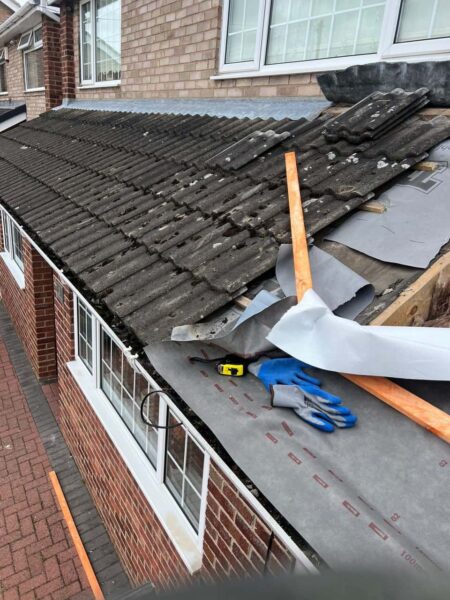How to Choose the Best Flat Roof Material for Your Climate
Introduction: Choosing the right material for your flat roof is crucial to ensure its durability, efficiency, and overall performance. The climate in which your property is located plays a significant role in determining which roofing material will be most effective. For homeowners and property managers in Bircotes, understanding the unique demands of the local climate can help you make an informed decision. This blog post explores the best flat roof materials suited to different climates, with a focus on the specific needs of the British weather.
Understanding Your Climate
Bircotes experiences a temperate maritime climate, characterised by mild temperatures, moderate rainfall, and occasional bouts of extreme weather, such as strong winds and heavy downpours. These conditions necessitate a roofing material that can withstand moisture, provide insulation, and resist wind damage.
Best Flat Roof Materials for Temperate Climates
1. EPDM (Ethylene Propylene Diene Monomer) Rubber Roofing
Advantages:
- Durability: EPDM roofs are known for their long lifespan, often lasting over 30 years with proper maintenance.
- Weather Resistance: This material is highly resistant to UV rays, ozone, and extreme temperatures, making it ideal for the varying weather conditions in Bircotes.
- Flexibility: EPDM remains flexible in both hot and cold temperatures, reducing the risk of cracking and other damage.
- Low Maintenance: Requires minimal upkeep compared to other roofing materials.
Considerations:
- Installation: Professional installation is recommended to ensure a watertight seal.
- Aesthetics: Available primarily in black and white, which may limit design options.
2. TPO (Thermoplastic Olefin) Roofing
Advantages:
- Energy Efficiency: TPO roofs reflect UV rays, helping to keep your building cooler and reducing energy costs.
- Durability: Resistant to punctures, tears, and chemical exposure.
- Seam Strength: Heat-welded seams provide strong, durable bonds that are less likely to fail.
Considerations:
- Cost: Slightly more expensive than EPDM, but the energy savings can offset the initial investment.
- Professional Installation: Requires skilled professionals to ensure proper installation and seam welding.
3. PVC (Polyvinyl Chloride) Roofing
Advantages:
- Durability: PVC roofs are highly durable and resistant to chemicals, fire, and wind.
- Energy Efficiency: Similar to TPO, PVC roofs reflect sunlight, aiding in temperature regulation.
- Seam Strength: Heat-welded seams create strong, waterproof joints.
Considerations:
- Cost: One of the more expensive flat roofing options.
- Environmental Impact: The production and disposal of PVC can have a higher environmental impact compared to other materials.
4. Modified Bitumen Roofing
Advantages:
- Durability: Resistant to heavy foot traffic and impacts, making it suitable for roofs that double as terraces or walkways.
- Flexibility: Adapts well to temperature fluctuations, reducing the risk of cracking.
- Layered Installation: Multiple layers provide enhanced protection against leaks.
Considerations:
- Maintenance: Regular inspections and maintenance are required to ensure longevity.
- Installation: This can be labour-intensive and may require professional installation.
Factors to Consider When Choosing a Flat Roof Material
1. Climate Compatibility
Select a material that can withstand the local weather conditions, including temperature extremes, moisture, and wind.
2. Energy Efficiency
Consider the material’s ability to reflect sunlight and provide insulation, which can help reduce energy costs and maintain indoor comfort.
3. Durability and Lifespan
Opt for a material that offers long-term durability with minimal maintenance. This ensures your investment provides value over the years.
4. Cost
Evaluate the initial cost of the material and installation, as well as the long-term savings from reduced maintenance and energy efficiency.
5. Environmental Impact
If sustainability is a priority, choose materials with low environmental impact and high recyclability.
Conclusion: Choosing the best flat roof material for your climate is essential to ensure its longevity and performance. For property owners in Bircotes, materials like EPDM, TPO, PVC, and modified bitumen offer excellent options tailored to withstand the local temperate maritime climate.
Call us on: 01302 490 889
Click here to find out more about KAD Roofing Bircotes
Click here to complete our contact form and see how we can help you with your roofing needs.

